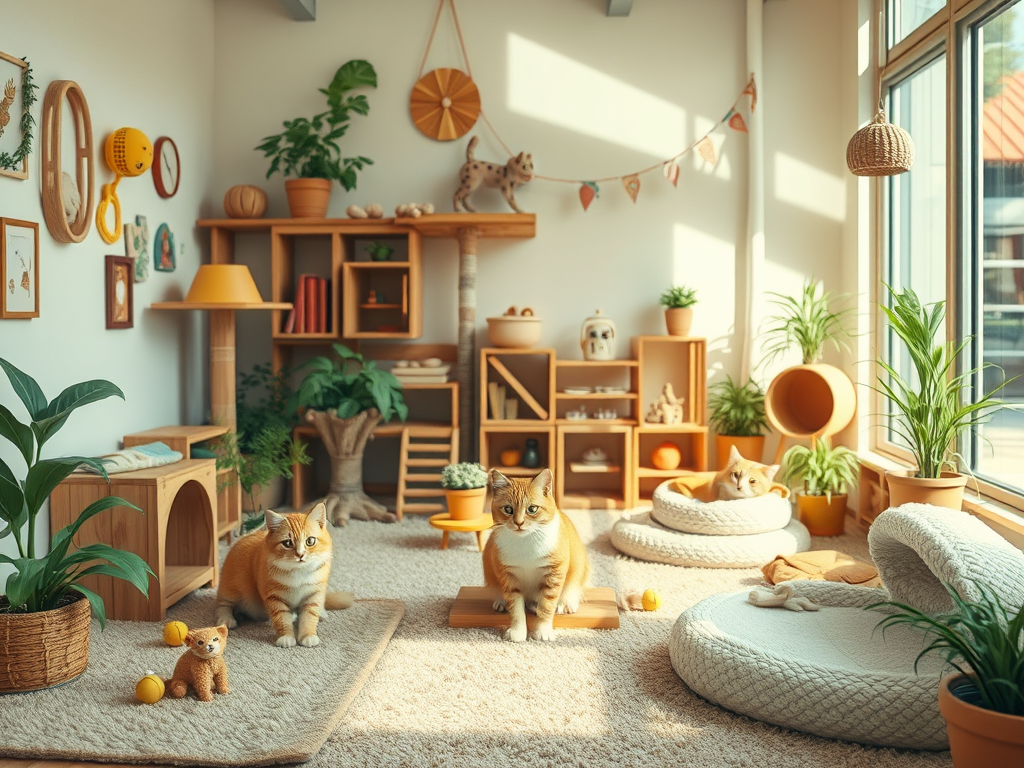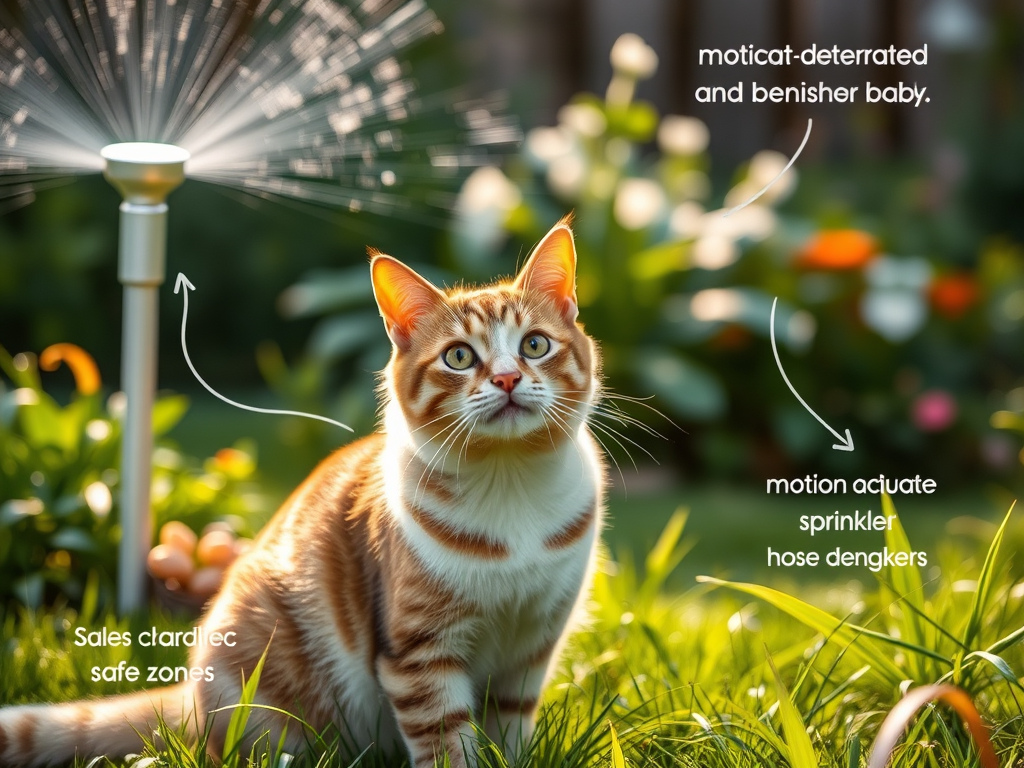Effective Techniques to Reduce Your Cat’s Natural Hunting Instincts
Reducing the Hunting Impact of Your Cat: Cats are instinctual hunters, a behavior deeply ingrained in their DNA through generations. While this predatory nature is natural, you have the ability to cultivate a safe and stimulating indoor environment that satisfies these instincts while safeguarding local wildlife. By creating engaging spaces and activities tailored to stimulate their senses, you can keep your feline companion both entertained and happy, ensuring they thrive without posing a danger to the outdoor animal populations.
Making use of interactive toys is an excellent way to enrich your cat's indoor hunting experience. Options like feather wands, laser pointers, and remote-controlled mice can captivate your pet for hours. These toys simulate natural hunting scenarios, encouraging your cat to stalk and pounce, which not only provides essential mental exercise but also supports their physical health. Engaging playthings not only keep your cat occupied but also contribute to their overall happiness by allowing them to expend energy constructively and satisfy their curiosity.
Transform your living space into a feline adventure zone by designing obstacle courses filled with an array of boxes, tunnels, and shelves. This mini jungle gym promotes exploration and active play, giving your cat the opportunity to climb, leap, and investigate different environments. Cats are inherently curious, so providing them with varied spaces to explore taps into their wild instincts, enabling them to embark on thrilling adventures right from the comfort of home.
Never underestimate the advantages of puzzle feeders. These engaging tools not only stimulate your cat's mind but also mimic the effort they would typically exert while hunting. Incorporating treat-dispensing puzzles into your pet's daily routine keeps their brains active while providing a fun, rewarding experience. This method not only entertains your feline but also encourages healthy eating habits, as it teaches them to work for their treats, promoting both mental and physical well-being.
Prioritize playtime as a vital aspect of your cat’s daily routine. Engaging in interactive play is essential for strengthening the bond between you and your pet. Set aside dedicated time for play sessions, using the same toys your cat enjoys during solo play. This mutual engagement not only alleviates any pent-up energy your cat may have but also enriches your relationship, resulting in a more fulfilling experience for both you and your feline friend.
Creating a stimulating indoor environment for your cat is entirely possible with a bit of creativity and effort. Your home can evolve from merely being a shelter to an exciting landscape that caters to their natural hunting instincts while keeping them safe from outdoor dangers. With careful planning, you can nurture a joyful and fulfilled indoor cat, ensuring their happiness and well-being.

Leash Training: A Gateway to Safe Outdoor Exploration for Your Cat
Embracing leash training can unveil a new world of safe outdoor exploration for your cat. While walking is typically associated with dogs, cats can enjoy the great outdoors as well, provided they receive the right training and ample patience throughout the process. By introducing your feline friend to a harness and leash, you can allow them to experience the beauty of nature without compromising their safety.
Start the leash training process with a well-fitted harness that ensures comfort for your cat. It's crucial to allow your pet to become acquainted with the harness before attempting to put it on. Encourage them to sniff and examine the harness, which will help alleviate any anxiety associated with it. By gradually introducing the harness at their own pace, you can foster positive associations that will make the transition smoother.
Once your cat is comfortable with the harness, clip on a lightweight leash and begin practicing in the safety of your home. This familiar environment will help them adjust to the sensation of wearing a leash while building their confidence. Be patient and expect some initial resistance; this patience is essential to helping your cat acclimate to this new and exciting experience.
When taking your cat outside for the first time, choose a calm and secure location, such as your backyard or a tranquil park. Ensure the area has minimal traffic and distractions, allowing your cat to feel at ease. Start with short outdoor excursions to avoid overwhelming them, gradually increasing the duration as they become more comfortable with their new surroundings.
Supervised outdoor time enriches your cat's life, enabling them to enjoy the sights, sounds, and scents of nature while protecting local wildlife. Imagine the delight on your cat's face as they discover new experiences within a safe environment. This bonding experience not only enhances their quality of life but also strengthens the bond between you and your pet.
Real stories from fellow cat owners can serve as inspiration. Many have initially doubted whether their cats would adapt to leash walking, but consistent practice and positive reinforcement have proven effective. Celebrate each small success as a step towards broadening your cat's horizons while ensuring their safety.
By incorporating leash training into your cat's routine, you facilitate a balance of outdoor enjoyment and wildlife conservation. This approach allows your cat to explore freely while cultivating a sense of security in their surroundings.
Creating Secure Outdoor Environments: Discover the Advantages of Catios
Outdoor cat enclosures, commonly known as catios, present the perfect solution for adventurous cats eager for outdoor experiences without the inherent risks. These secure structures allow your feline friends to relish the outdoors while ensuring their safety and the protection of local wildlife.
Building or purchasing a catio can be customized to fit your available space and budget. Options range from simple balcony enclosures to more elaborate backyard setups. The primary focus should be on ensuring that the structure is escape-proof, as safety is the utmost priority in providing a secure environment for your cat.
When designing your catio, think about incorporating multiple levels and cozy hiding spots. Cats thrive in environments that offer vertical spaces and places to retreat. By adding platforms, ramps, and hammocks, you can elevate a basic enclosure into an engaging paradise that reflects their natural habitat.
Enhancing the sensory experience within the catio is also beneficial. Introduce elements like cat grass, scratching posts, or logs to create an engaging environment filled with diverse textures and scents. This sensory enrichment can keep your cat entertained and satisfied while allowing them to enjoy the pleasures of the outdoors in a controlled setting.
Regular maintenance is essential for ensuring the safety of your catio. Routinely inspect for any signs of wear and tear, including the integrity of the mesh, the structure, and the locks. Cats are naturally inquisitive and may test the limits of their enclosure, so keeping it in optimal condition is vital for their safety and health.
With a catio, your feline friend can enjoy sunbathing, climbing, and watching wildlife without jeopardizing local ecosystems. They can bask in the sun and observe birds from the safety of their outdoor retreat, remaining content while wildlife remains protected.

Proven Behavioral Training Methods to Minimize Hunting Instincts
Training your cat to reduce hunting behaviors may appear daunting, but with the right strategies, it can be a manageable endeavor. The key is understanding their natural instincts and the behaviors that drive them to hunt, which is crucial for implementing effective training techniques.
Utilizing technology can significantly enhance your training efforts. Consider employing motion-activated deterrents, such as sprinklers or noise-makers, to establish boundaries that discourage hunting without disrupting other activities. Strategically zoning your yard can redirect your cat’s attention away from potential prey.
Positive reinforcement plays a critical role in modifying your cat's behavior. Reward them for displaying non-hunting actions with treats or affection. For instance, if your cat responds to your call or refrains from pursuing a potential target, offer them a tasty treat or extra cuddles. This approach encourages them to repeat desirable behaviors while diminishing their instinctive urge to hunt.
Incorporating clicker training can also be an effective method. This technique involves linking a distinct sound with positive actions, allowing your cat to understand the connection between their behavior and rewards. By clicking when they display desired behavior, you reinforce good habits and clarify your expectations.
For more personalized support, think about consulting with feline behavior specialists. They can provide tailored advice and insights that address specific challenges, helping you and your cat coexist harmoniously while respecting local wildlife.
The objective of using deterrents and training is not to punish but to guide your cat toward behaviors that prioritize their safety and the environment. With consistency and patience, you can channel their instincts, leading to safer outdoor interactions for both your cat and local wildlife.
Nutritional Strategies to Mitigate Your Cat's Hunting Drives
The type of food you provide and the feeding strategies you implement can significantly impact your cat's hunting instincts. Interestingly, even a well-fed cat may still exhibit hunting behaviors; however, the manner in which you feed them can help alleviate this drive.
Free feeding, where food is available throughout the day, may not be the best choice for every cat. Instead, consider establishing a schedule for feeding times. By setting predictable mealtimes, your cat may be less inclined to hunt, learning to associate food with specific times of the day, which reduces the instinct to seek out prey.
Implementing interactive feeding techniques can be transformative for your cat’s behavior. Utilizing food puzzles or dispensers can replicate the hunting experience, requiring your cat to ‘work' for their meals. This not only keeps them mentally and physically engaged but also channels their energy positively, allowing their natural instincts to manifest in a safe manner.
Pay close attention to the nutritional quality of their food as well. A diet rich in protein and low in carbohydrates aligns more closely with a cat's natural dietary preferences, potentially leading to a reduction in hunting behaviors. Collaborating with a veterinarian to tailor your cat's diet can ensure their nutritional needs are effectively met.
Lastly, providing a variety of food types can satisfy their inherent curiosity and appetite for novelty. Alternating between dry kibble, wet food, and raw diets can keep mealtime exciting, reducing the temptation to seek thrills beyond their food dish.
Feeding strategies are not just about sustenance; they serve as a powerful tool for managing your cat's behavior. By adjusting how and what you feed them, you can effectively curb their inclination to hunt while ensuring they remain satisfied and healthy.

Encouraging Community Responsibility for Cat Conservation
Cats are cherished companions, and as their caregivers, we bear the responsibility of ensuring they coexist peacefully with local wildlife. By embracing community initiatives and personal accountability, we can significantly reduce the ecological impact of free-roaming cats.
Engaging with local conservation organizations is an excellent way to stay informed about wildlife-friendly practices. Many communities offer educational workshops for cat owners, discussing the ecological implications of allowing cats to roam freely and presenting solutions to mitigate these effects.
Consider starting or joining neighborhood discussions or social media forums centered around responsible pet ownership. Sharing resources, advice, and experiences can foster a more wildlife-conscious community, creating a supportive environment for all pet owners.
One proactive approach could be to establish cat-friendly zones within community gardens or parks. These designated areas can include enclosures or supervised play spaces, providing a safe environment for both cats and wildlife. This collaborative effort raises awareness and encourages positive interactions between pets and nature.
Incorporating family-friendly initiatives, such as sticker campaigns or educational contests for children and teens, can enhance awareness about responsible pet ownership and the significance of coexisting with nature.
Lead by example at home by applying the strategies you’ve learned. Whether it’s leash training, building catios, or modifying feeding practices, demonstrating a commitment to a harmonious relationship between your cat and the environment can inspire others to follow suit.
By combining individual actions with community-based initiatives, we can create a supportive network that balances our cats’ needs with ecological stewardship. Together, we can cherish our pets while respecting and safeguarding the wild spaces surrounding us.
The Article: Minimize Your Cat’s Hunting Impact Appeared First On Unity Pets.
The Article Minimize Hunting Impact of Your Cat Effectively Was Found On https://limitsofstrategy.com
